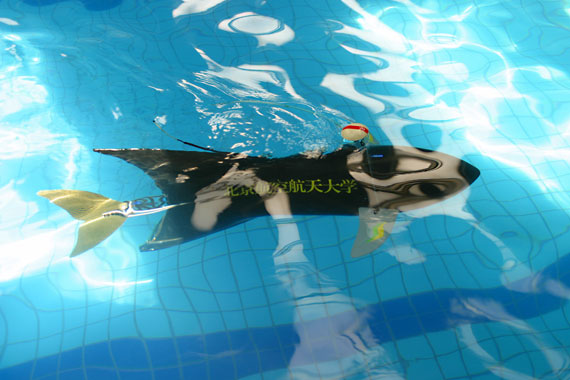Robotic Fish From China

The black-bodied robot fish is about four feet long, and resembles a real fish in both shape and movement. The robot is controlled remotely with a palm-sized control pad. It also has automatic navigation controls and swims at about four kilometers per hour for up to three hours.
The robofish from China is described as being "flexible in action, easy to operate and makes little disturbance to surrounding environment." It has been tested in an underwater search of a sunken warship last August.
This sophisticated robot might be the direct ancestor of the Mitsubishi turbot, the robofish that is the star of Michael Swanwick's 2002 novelette Slow Life. In the story, astronauts gamely explore Titan, one of the moons of Saturn, while doing good public relations by answering constant questions posed for them over the Web. The robofish is used to swim not just in water, but in icy lakes of methane and ammonia:
If you like robofish, you might want a look at robotic lamprey parasites. Learn more about the real Titan (as opposed to the literary version). Read more about the underwater robotic fish.
(This Science Fiction in the News story used with permission from Technovelgy.com - where science meets fiction.)
Breaking space news, the latest updates on rocket launches, skywatching events and more!
Bill Christensen is the founder and editor of Technovelgy, a website dedicated to cataloguing the inventions, technology and ideas of science fiction writers. Bill is a dedicated reader of science fiction with a passion about science and the history of ideas. For 10 years, he worked as writer creating technical documentation for large companies such as Ford, Unisys and Northern Telecom and currently works to found and maintain large websites. You can see Bill's latest project on Twitter.
